The Pop Culture Detective Case Files: Case 001
One of the objectives I set for myself when I started Mindset & Mythos on Substack was to study the creative act itself, and its relation to artistic influence. When I come across media that moves me and excites me and has an influence on me, I want to put myself back to the moment of creation through the clues left throughout the work. (Comic books, movies, novels, TV shows, short stories.)
This obsessive seeking to understand how creativity works has led to multiple readings and viewings of media, which in turn has led to a sort of artistic decoding where I can now identify certain tropes of storytelling easily.
In a way very similar to the one that Pauline Kael could make keen insights into a filmmaker’s personality from their films, I can make educated guesses about a creator’s influences and methods from studying their work.
Today I am looking at a Gil Kane work that was separate from his work on Marvel and DC Comics. His magazine format-sized, self contained story His Name Is…Savage! Published in 1968 for Adventure House Press,
The two main takeaways are:
Gil Kane was an innovator in comics: His Name is…Savage! Was published in a magazine-size format, a larger format than the standard comic book, and it was sold on newsstands rather than bookstores and comic book stores. Gil Kane had a long and varied career that saw him co-create Green Lantern and Atom for DC Comics, and Adam Warlock and Iron Fist for Marvel Comics. In addition to creating characters for Hanna Barbera cartoons and creating the sci-fi/fantasy series Jason Drum for the Franco-Belgian publication Tintin Weekly. He also pioneered what we now call the graphic novel with the publication of Blackmark in 1971, a paperback-sized comic book for Bantam Books.
Gil Kane was a great artist but not a solid writer: While he co-plotted His Name is…Savage! And Blackmark, the actual fleshing out of Kane’s ideas was handled by Archie Goodwin. Gil was a prolific creator of characters and generator of ideas, but his career was marked by collaborations with writers. Gerry Conway, Kane's collaborator on the death-of-Gwen-Stacy story, described Kane in 2009 as “... a marvelous draftsman and an idiosyncratic storyteller. I quickly learned that working with him Marvel-style (that's when a writer gives the artist a plot and the artist breaks down the story, panel by panel and page by page) could sometimes result in lopsided storytelling; the first two-thirds of a story would be leisurely paced, and the last third would be hellbent-for-leather as Gil tried to make up for loose storytelling in the first half. So after doing a few stories with him in my usual loosely plotted style, I began giving him tighter plots, indicating where the story had to be by such-and-such a page. He seemed to prefer this, and I'm generally happier with the later stories we did together than the first few.”
This is not a critique of Gil Kane, just an observation. Gil Kane was celebrated and honored by the comic book and illustration industry.
Kane was in high demand in the peak years of his career, nearly constantly working on multiple projects at once, and had enough clout to create side projects that went against the comic book industry standards, such as His Name is..Savage! You don’t get to do that if you’re not perceived as very competent within your field.
But lacking a foundation in written communication meant Gil Kane would rely heavily on tropes that I feel worked against the visual punch of superhero comics.
And this is very visible in His Name Is…Savage!
I included a few pages of the comic book here so you can see for yourself. The cartoonists here will notice how the typed captions underneath each panel slow down what should be a swift-paced opening scene. The captions describe what you can see for yourself.
The writers who explore vintage crime thrillers will recognize the style the captions are written as similar to pulp-era fiction. In that era, the average pay was a penny a word. For writers to make a decent wage while working and living in New York City where the publishers were, meant a lot of repetition and non-efficiency within the narrative. An action scene would be extended to just before the reader started to get bored with the preamble to action, but very little actual action.
In His Name Is…Savage! Gil Kane (and perhaps Archie Goodwin) relied on pulp fiction tropes to the point that they were leaning on pulp as a crutch. There was a time constraint adding to the creative decisions too as you can see from this quote.
In a 1996 interview on The Comics Journal, Kane said the actual drawing of Savage "was done, from beginning to end, in 30 days. That last page was inked at the printer while they were getting the book ready."
With the perspective offered to us looking back this far up the timeline, what creative and practical lessons can we take from this?
Gil’s career is an example of how having one highly developed skill balances out against a weak skill. Presently we’re in a online debate of nicheing down versus being a generalist. Gil Kane was an artist who straddled the line between both. While he specialized in art production, art direction and design, he worked closely with the writers as a co-plotter. The result is an artistic and thematic continuity that made his style visible across projects that went from fantasy to superhero to spy thrillers. This reminds me of Martin Scorsese, who is not a screenwriter, but he develops his projects with writers, sometimes even taking co-writing credit in his films. Fans of film can identify the cinematic tropes that make a Scorsese picture identifiable.
Though I’m referring to art in this writing, what Gil Kane did is applicable to business.
And with the tech available to us, how do we improve on what Kane and Goodwin did? Can we make it more efficient? Streamline the narrative?
And at this point I want to add a disclaimer:
I do not own any of the pages of artwork I am sharing here. These are photos I took from my own copy of the graphic novel I bought online, and am using them purely as a creative exercise. I am using this material for entertainment and education purposes only.
But this has run longer than my usual posts. When I started Mindset & Mythos I made the decision to keep my posts short to not take up too much of your time.
So now I’ll end it here by leaving you with some homework. Take these pages I photographed and have fun with them. Rearrange them in a way that you think is more efficient than what they did.
I’ll share my own edit on these pages on the next post.


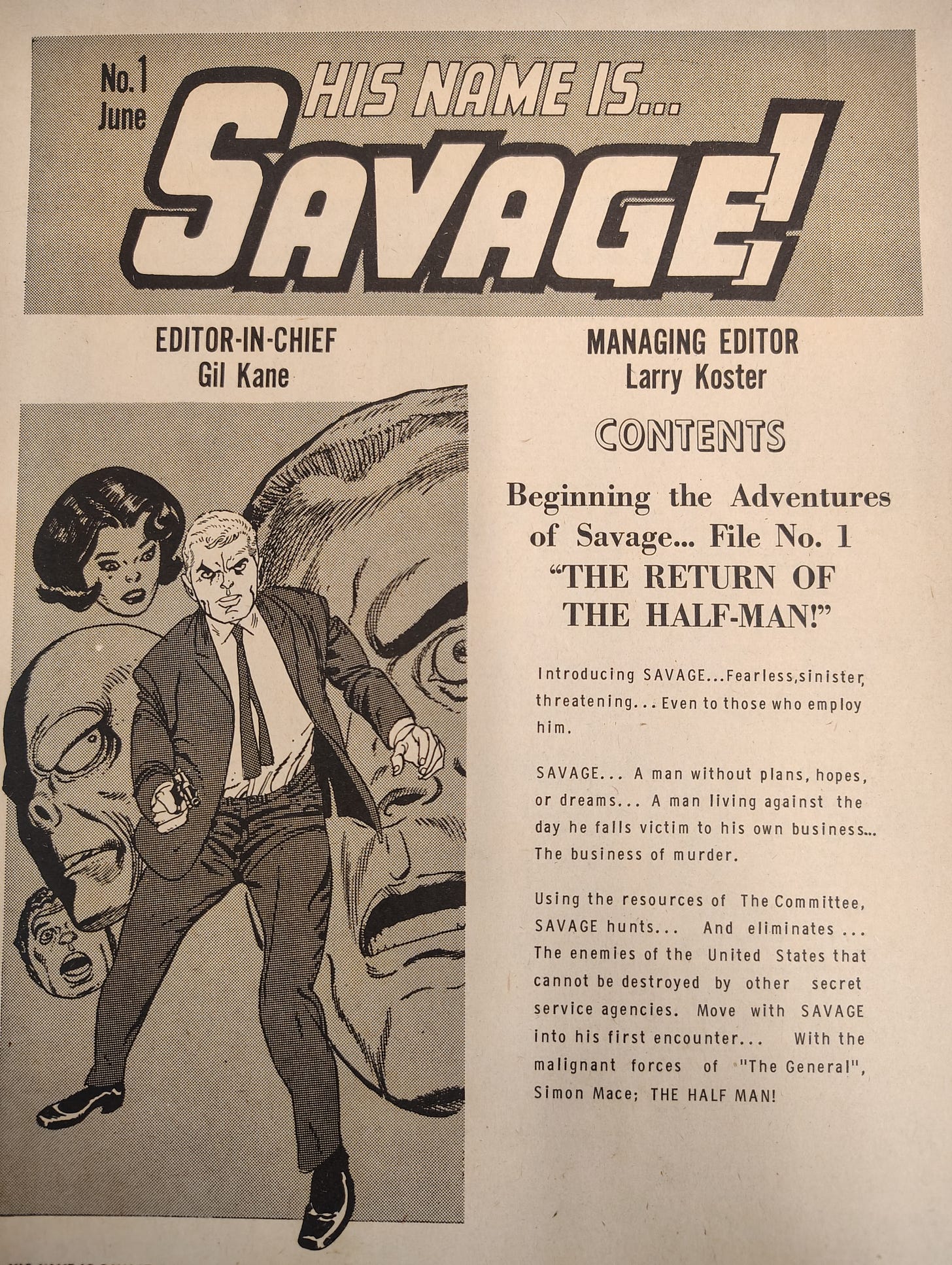
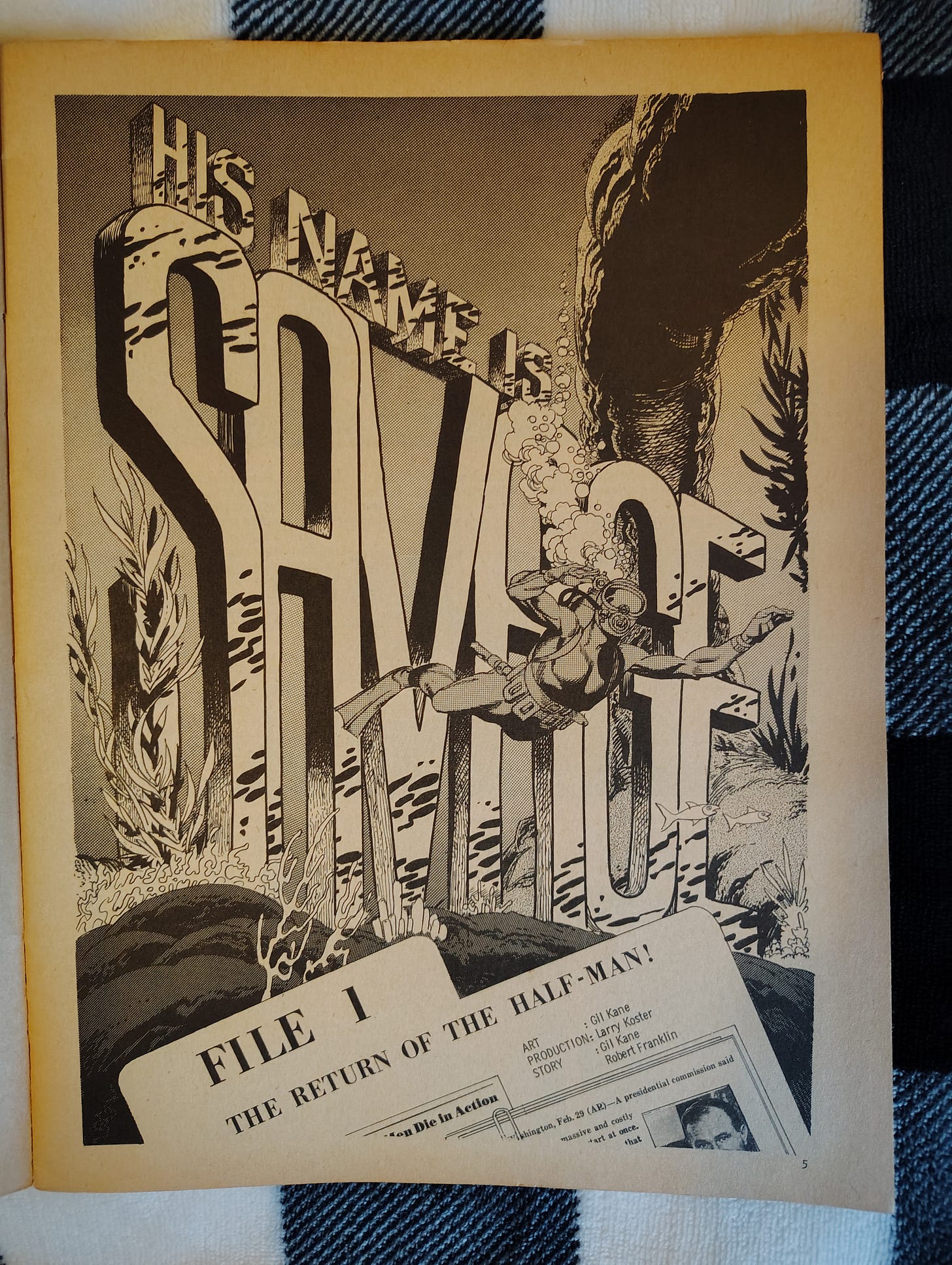
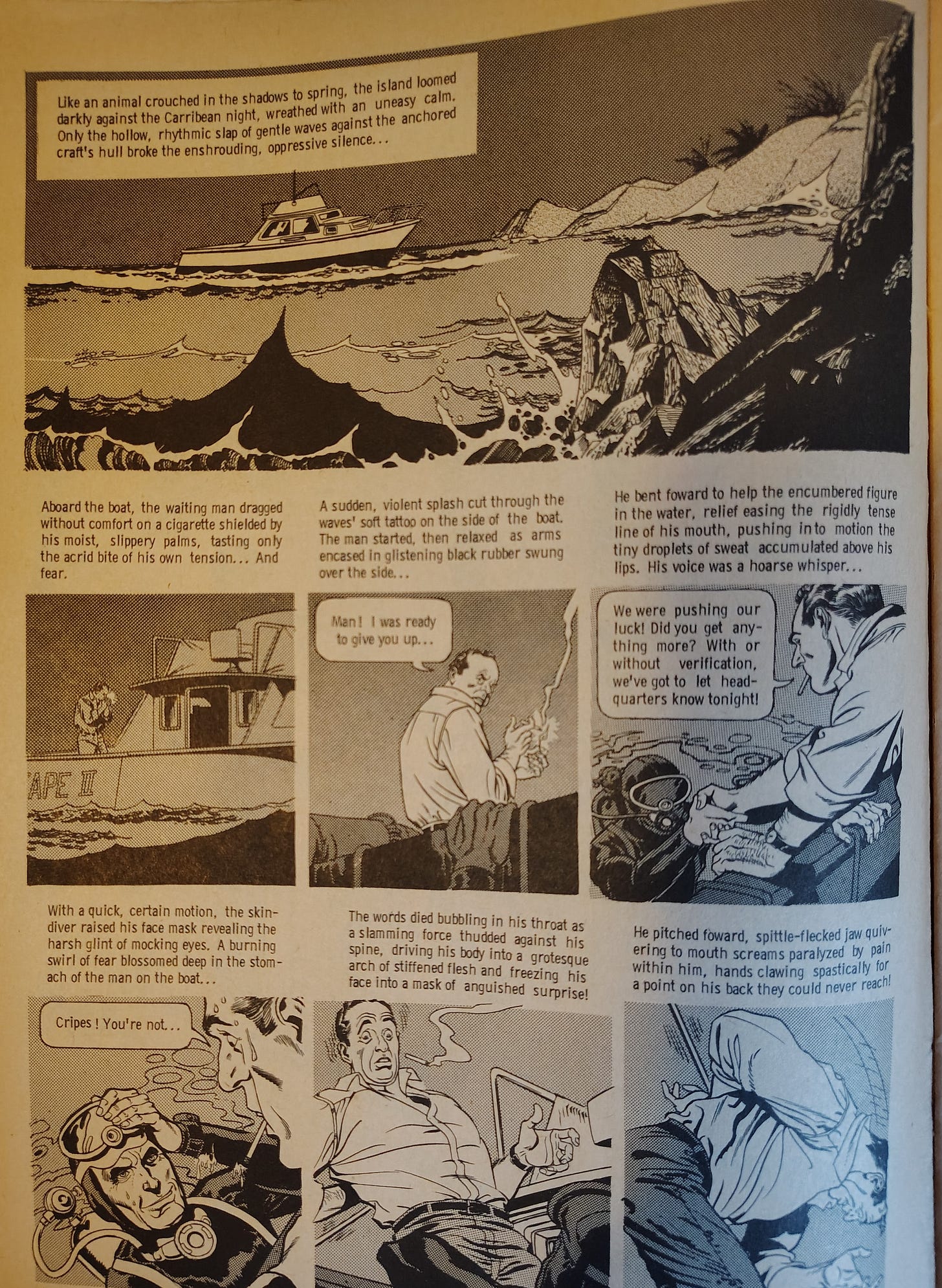
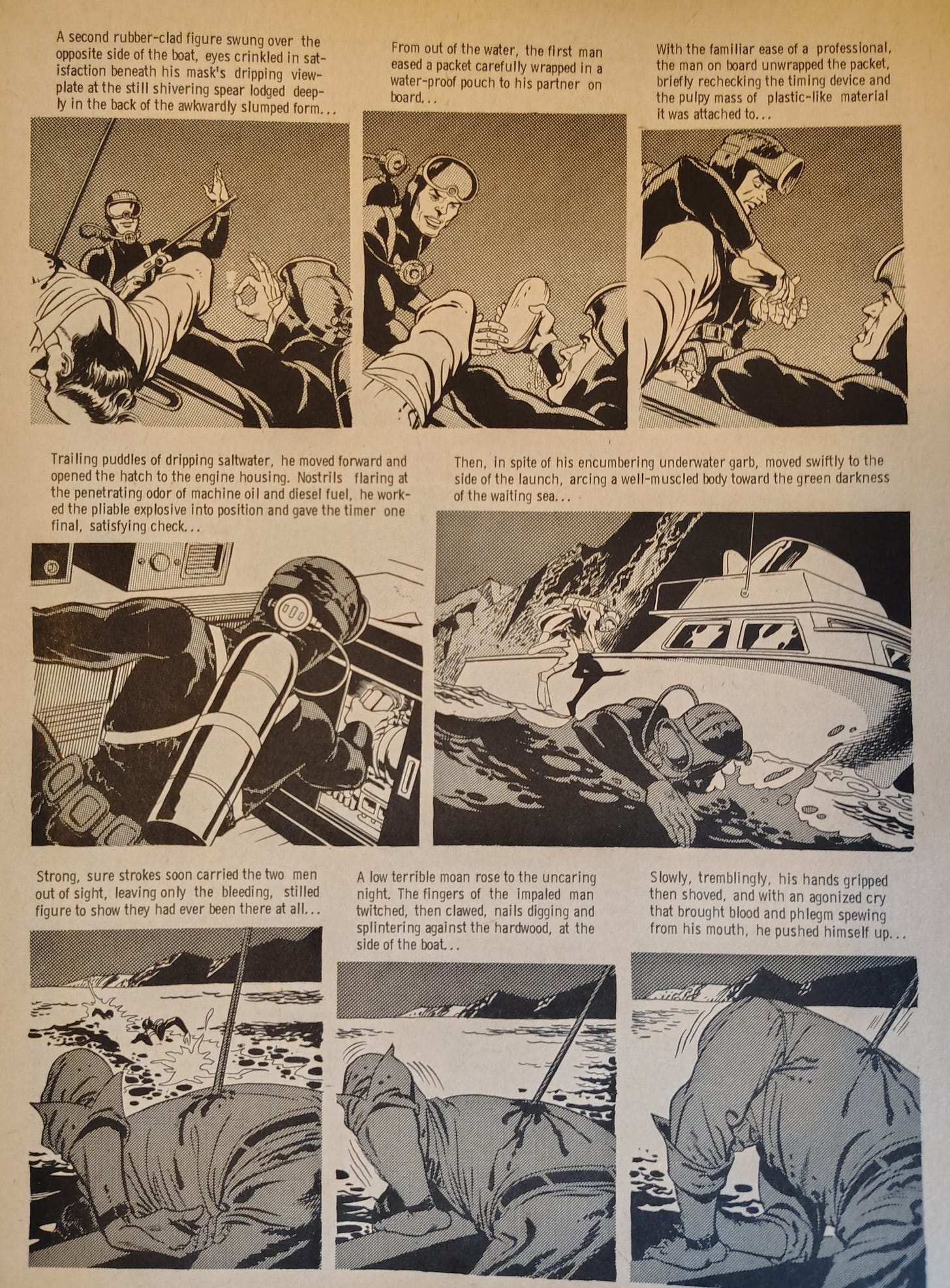
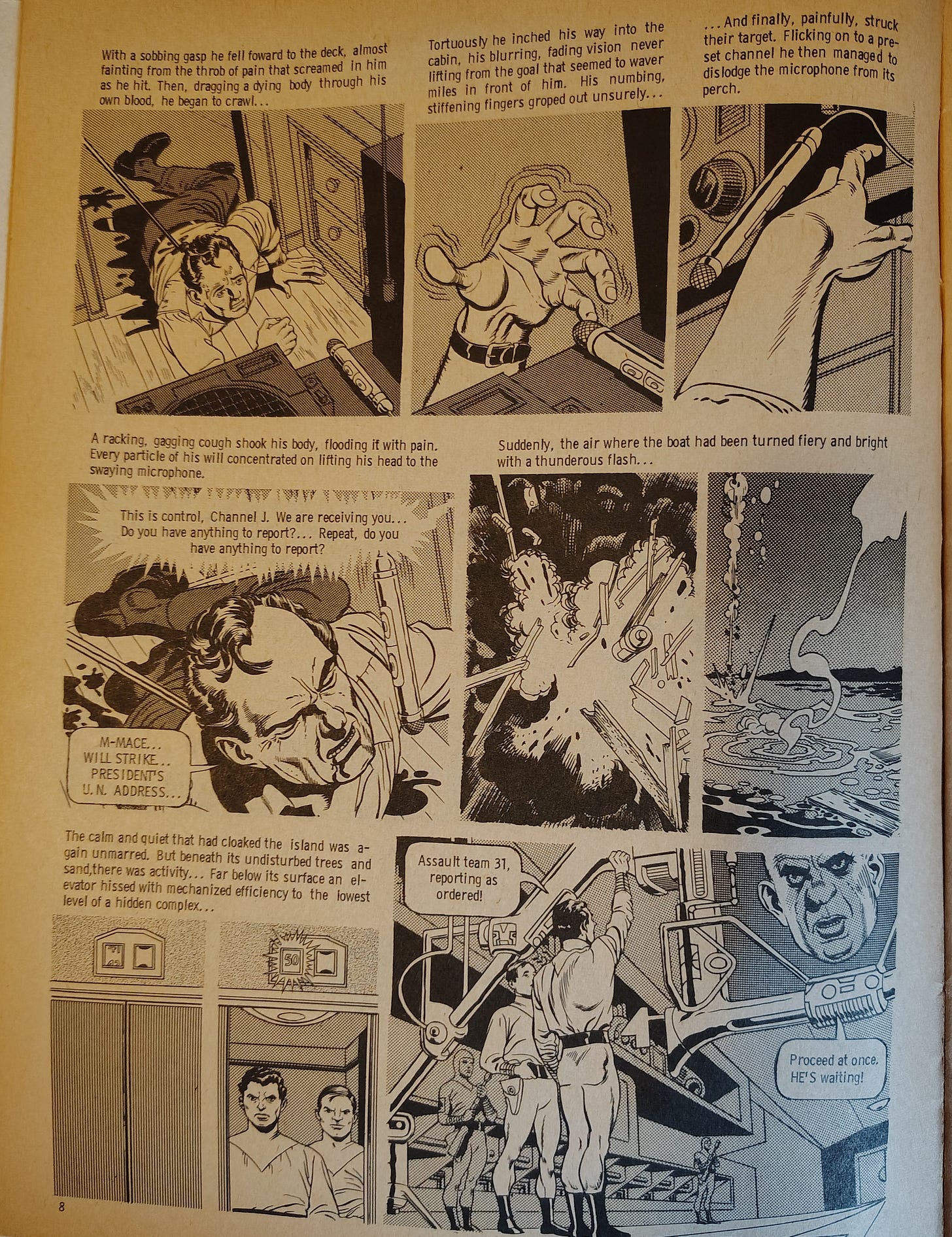
I love this old-school comic book drawing. I've got "The Real Power of the DC Universe" poster framed on my library wall. It's by Adam Hughes, a more modern artist.
Wow, yes, I can see where they threw in many more words to get the count up. I do enjoy the artwork of course but I see your point. I'm glad we no longer use pay-by-the-word as far as I know. No system is perfect but that one led to a lot of boring stuff that would have been much better and tighter, action stories. Great insights, Robopulp.